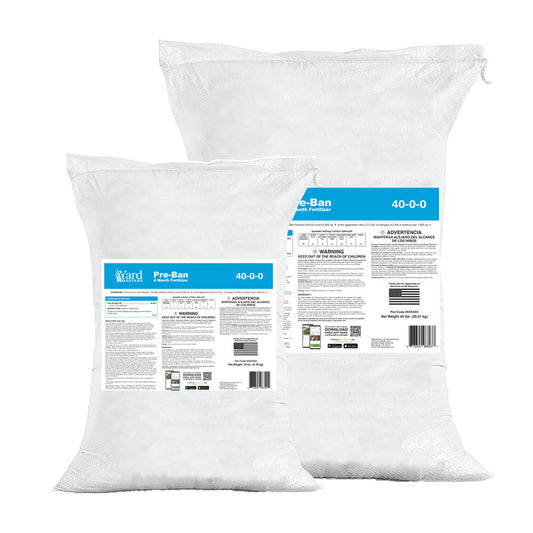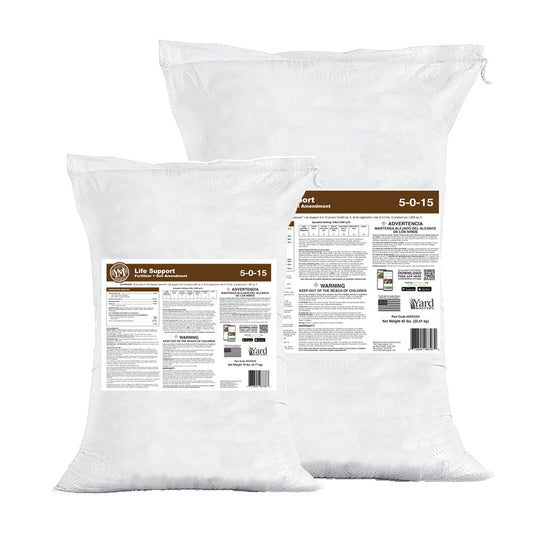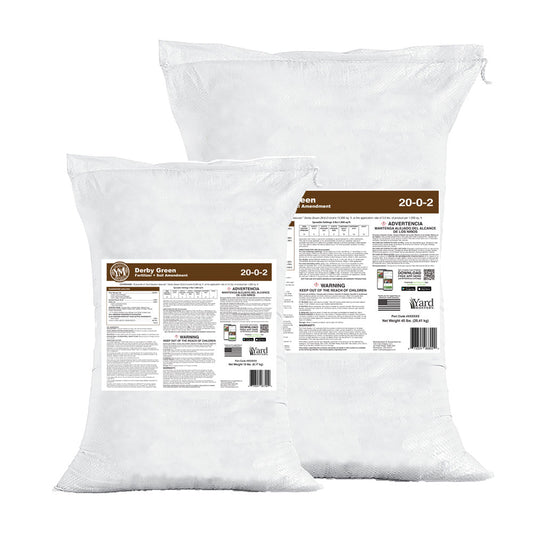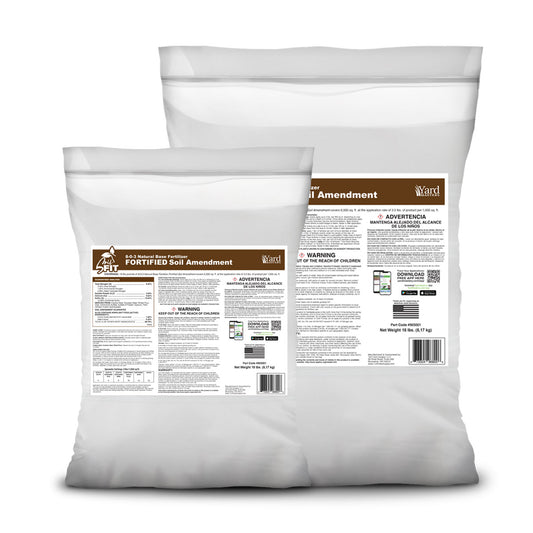Hello fellow Lawn Care Nut, and happy Mid-August to you!
As you’ve seen, I’ve been talking a lot the last few weeks about preparing for fall. In case you missed it, last week we talked about fall seeding and aeration and explored a common scenario where you have to choose between putting down pre-emergent herbicide to stop poa-annua (annual bluegrass) or taking a chance there and going ahead with aeration and overseeding the lawn. If you missed that -get it here, we released it as a supplement to our full Cool Season Hybrid Organic lawn plan. It’s important you read it if you missed it - again - pick up a copy here free.
Along with that guide then, I put out a video this past weekend where we weigh in with a scenario of crabgrass in the lawn. The question then being “If I’m going to seed here in the fall time, do I kill the crabgrass in the lawn first? If so, what do I use?”
The product I recommended is Quinclorac. It’s the industry standard in crabgrass post-emergence control and works pretty well even on more mature crabgrass - just remember, it’s really more of a spot or zone spray treatment so it’s ok to soak it pretty good on the larger, more mature plants. You know it’s working when they start to turn red a few days after you spray. Also, use a surfactant to make it stick.
Note: this strategy is meant for those of you with cool season lawns: Kentucky Bluegrass, Perennial Rye, Fescue. I bring this up because Quinclorac is NOT to be used on St Augustine or Centipede lawns; just want to make that clear.
Tenacity Herbicide:
Now, there is another strategy (a very good one) you can employ, but I caution you, it’s not for beginners. There is a herbicide for cool season lawns called “Tenacity” and it’s an interesting chemistry in the fact that the active ingredient, Mesotrione acts as both a pre-emergent and post-emergent herbicide. Additionally, the pre-emergent action of this chemical will NOT negatively affect your newly planted grass seed. That’s right, you can spray Tenacity down at the very same time you seed and get up to 21 days of pre-emergent activity without harming your newly germinating and growing grass seed.
Here it is, right from the label:
“New Seedings/New Lawn Establishment – Apply Tenacity at 5-8 fl. oz. per acre in at least 30 gallons of water per acre prior to seeding or post seeding of tolerant turfgrass species listed on this label, except fine fescue. Tenacity may reduce density of fine fescue seedings.
Tenacity can be used on grass seed blends that contain less than 20% by weight of hard or fine fescue. Tenacity will control many monocot and dicot weeds that compete with and slow the establishment of the turfgrass stands.
Apply at grass seeding or close to seeding for best performance. Avoid spraying on newly germinated turfgrass plants. Wait until the newly germinated turf has been mowed two times or four weeks after emergence (whichever is longer) before making a postemergence application.”
The good news here is that as you blanket spray this application (right on top of your seed is fine, just get it watered in) you are also going to kill off some of the weeds that are already popped. You won’t get optimum control because you are not using a surfactant (don’t use surfactant for seeding apps) but you will get some.
Here are the weeds that are controlled pre-emergent and post-emergent by Tenacity:

This screenshot is directly from the label - I’m calling out two particular weeds here.
First I’m calling out Nutsedge because I know many of you are seeing it right now. Tenacity works ok on nutsedge so if you are seeing it when you seed, spray and pray, all good.
Henbit because it’s a winter annual. It’s going to be germinating in the fall time right when you are seeding. Many of you will get it confused with creeping charlie but Henbit’s purple flowers are much more prolific in spring.
Anyway, you are not going to get any pre-emergent activity here, but having this on-hand for later fall sprays, maybe around Halloween or so, will be a good addition to your arsenal. I call out henbit because I know that many of you have it and it seems to come out of nowhere every spring. Now you know to look for it in late FALL!

Note: Tenacity is ok to spray at the time of seeding -- but you CANNOT spray it on newly germinated grass plants. You get one shot at the time of seeding and then from there, you have to wait until you have mowed your newly grown grass 2x before you can spray again. Do some math there in your head:
If it takes 10 days for your seed to germinate (tall fescue as an example) and another 10 days for it to be ready for it’s first mowing, then another 10 for the second, that is one full month you have to wait until you can spray Tenacity again. Yet your pre-emergent timing will have worn off more than a week earlier. Just keep that in mind if you decide to take on this strategy.
Now let’s look at a few other weeds Tenacity controls or works on:

Here are some pictures that were sent to me from a dude, Tony. This is a fescue lawn in North Carolina (I think I see common bermuda too). Either way, I believe the dead stuff is barnyardgrass (hard to tell) but you can see the Tenacity has turned it that very recognizable white color. This stuff is dead for sure. You’ll also notice some yellowing of the good turf and that is pretty normal. Just be careful - if you get heavy-handed with Tenacity, it will do damage but it should recover.


Overall - Tenacity is a great weed control for cool season lawns. It works well on most weeds you will come in contact with so as a general spot spray, it’s great and you should definitely consider it. However, it’s not my first choice when it comes to a strategy of fall seeding, aeration, and pre-emergent weed control. Here’s why:
Why Did I Not Mention Tenacity Before?
-
It adds another layer of difficulty - if you are going to be aerating and seeding and starter-ferting your lawn in fall time, you have a lot to worry about already. Adding in yet another step, one that involves a powerful weed killer, isn’t something I recommend. Instead, eat the elephant in bites that you can manage. We can control weeds later. Let’s work on the turf and the new seed. This is how I have always done it and it’s worked for me.
-
It only suppresses annual bluegrass and that was the focus of our previous strategy. Again, go back and read the supplement guide. We are really talking about annual bluegrass as an option here and Tenacity is only going to give suppression. With all the watering you are going to be doing on your new grass seed… I bet the efficacy will be severely reduced and you’ll get poa-annua break through and Tenacity will do you no good from there.
There are pros-and-cons to pretty much everything in life, including lawn care and this is a perfect example of that. The choices you make will be based on your commitment, skill, budget, time and overall approach.
If you’re asking me, I’d say leave it out for now, save the chemical. Work on strengthening your existing turf. Work on growing fresh turf if you are seeding. Concentrate on your irrigating of that new grass you are growing - the biggest reason I see for grass seed project failure is lack of water. I’d rather you focus there and hand pick any weeds that come into your fresh grow.
Me and Jake The Lawn Kid are getting ready for a fall renovation in NW Indiana. We have been talking about strategy and we are NOT going to use Tenacity. We will get great results, and we will be Throwing Down! Want to follow along? Get the cool season e-book now because this is the strategy we plan to follow.
I’ll see you in the lawn!
AL








